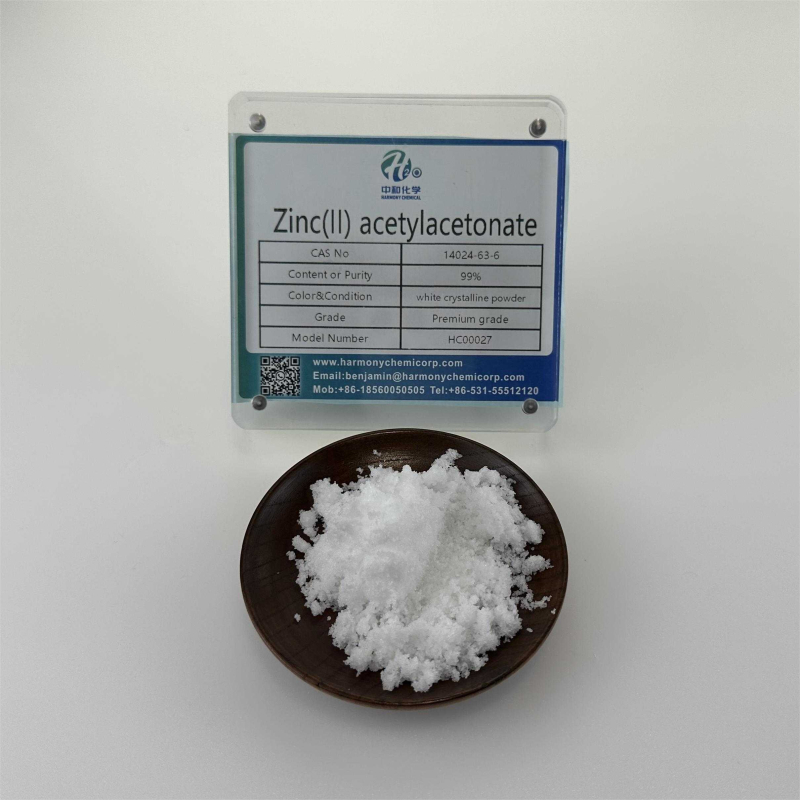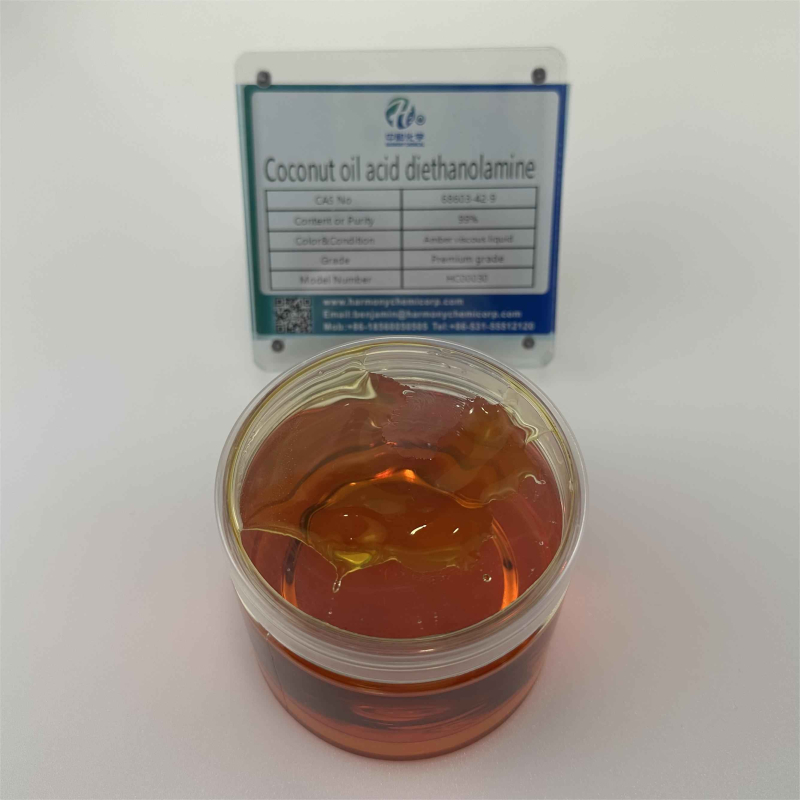Thermoplastic resin, hydrolyzed into polyvinyl alcohol in acid or alkaline solvents, is the main raw material for preparing polyvinyl alcohol. When molecules contain photosensitizers, they are sensitive to light and undergo decomposition reactions under the action of ultraviolet light or electron beams, exhibiting positive photosensitive resin properties. It can copolymerize with various monomers with double bonds, introducing various functional groups and possessing different properties.
Contact Now
Ethyl acetate is a broadly used satisfactory chemical product with incredible solubility, fast drying, and a large vary of uses. It is a very essential natural chemical uncooked cloth and tremendous industrial solvent, and is extensively used in the manufacturing procedure of acetate fiber, ethyl fiber, chlorinated rubber, ethylene resin, acetate fiber resin, artificial rubber, coatings, and paints.
Contact Now
applicationNickel acetate is frequently used as a metallic catalyst in natural chemistry. Commercialized nickel acetate is frequently its hydrate, which can be used to catalyze coupling reaction, discount reaction, etc. It is extensively used in metallic natural reaction, nickel plating, metallic coloring, and drug molecule preparation.Mainly used as mordant and additionally for electroplatingStorage precautions: Store in a cool and ventilated warehouse.
Contact Now
Polyvinyl alcohol resin (PVA) aqueous answer has awesome moldability and emulsifying properties, forming a movie with amazing adhesion, solvent resistance, friction resistance, tensile strength, and oxygenbarrier properties.Solubility: Soluble in water, typically heated to 65-75 ℃ for whole dissolution. Insoluble in gasoline, kerosene, vegetable oil, benzene, toluene, dichloroethane, carbon tetrachloride, acetone, ethyl acetate, methanol, ethylene glycol, etc. Slightly soluble in dimethyl sulfoxide.
Contact Now
Zirconium acetate (liquid), a colorless obvious liquid organized by way of the response of zirconium oxychloride and sodium carbonate. Widely used in industries such as medicine, cosmetics, electronics, ceramics, paint, glass, etc.Density1.279g/mLat25 ° CFormliquidWater solubility931g/Lat20 ℃InchiKeyMFFVROSEPLMJAP-UHFFFFAOYSA-JCAS datalibrary 7585-20-8 (CASDataBaseReference)EPA Chemical InformationAceticacid, Zirconiumsalt (1:?) (7585-20-8)
Contact Now
Appearance white block or powderAsh content/% ≤ 0.01 0.01 0.01 0.01The softening factor is 83~143 ℃. Soluble in acetone, toluene, cyclohexane, ethyl acetate, tetrahydrofuran, dichloromethane, etc., insoluble in solvent gas and water
Contact Now
nameUlipristal AcetateCAS NO126784-99-4Molecular formulaC30H37NO4molecular weight475.62melting point183-185 ºCboiling point640.1±55.0 °C(Predicted)density1.19Storage conditions-20°Cformpowdercolourwhite to beige
Contact Now
Melting point: 165-185 ℃Density: 1.08g/cm3Refractive index: 1.488 (20 ℃)Water absorption rate: no longer extra than 0.4%Softening temperature: 60-65 ℃Glass transition temperature: 66-84 ℃ (varies relying on diploma of polymerization)Solubility: Soluble in most natural solvents such as alcohols/ketones/ethers/esters, insoluble in carbon hydrocarbon solvents [2]Application Editing1.
Contact Now
Mainly used in PVC molding methods such as rolling, injection, blow molding, and extrusionAs a catalyst, the paint and coating comprise DBT compounds; Soft polyvinyl chloride (PVC) profiles, whether or not they are gentle or extruded collectively with challenging PVC; Outdoor fabric are included with PVC containing DBT compounds as stabilizers on their surfaces;Pipes, drainage ditches, and home equipment used for out of doors rainwater, as nicely as protecting substances
Contact Now
Physicochemical properties: Acetylacetone zinc is a white powder with a attribute odor, secure properties, and convenient to react with oxidants. Melting factor 129-133 ℃. Easily soluble in methanol.Acetylacetone zinc can be used as an additive, inclusive of halogenated polymers, mainly polyvinyl chloride. It is the most usually used warmness stabilizer in the method of agents, and is additionally used as a catalyst.
Contact Now
nameCupferronCAS NO135-20-6Molecular formulaC6H9N3O2molecular weight155.15melting point150-155 °C (dec.)boiling point278.95°C (rough estimate)density1.3092 (rough estimate)Storage conditions2-8°CformPowdercolourNeedles from water
Contact Now
nameMK-4827 (tosylate)CAS NO1038915-73-9Molecular formulaC26H28N4O4Smolecular weightmolecular weightmelting point>142oC (dec.)Storage conditions-20°C FreezersolubilityMethanol (Slightly)formformcolourOff-White to Pale Yellow
Contact Now
nameDapoxetine hydrochlorideCAS NO129938-20-1Molecular formulaC21H24ClNOmolecular weight341.88melting point175-1790CStorage conditionsroom tempformpowdercolourwhitesolubilityDMSO: ≥20mg/mL
Contact Now
Tetracaine hydrochloride is used for mucosal floor anesthesia, conduction anesthesia, epidural anesthesia, and subarachnoid anesthesia; Used for ophthalmic floor anesthesia, barring constricting blood vessels, detrimental corneal epithelium, and growing intraocular pressure.nameTetracaine hydrochlorideCAS NO136-47-0Molecular formulaC15H25ClN2O2melting point149°Cdensity1.1279 (rough estimateStorage conditions2-8°Csolubilityalcohol: solublesoluble 40 parts of solventformneatcolourWhite to Almost whiteSOLUBLESoluble in water at 50mg/ml
Contact Now
nameLOXO-292CAS NO2152628-33-4Molecular formulaC29H31N7O3molecular weight525.6density1.36±0.1 g/cm3(Predicted)Storage conditionsStore at -20°CformA crystalline solidAcidity coefficient (pKa)14.00±0.29(Predicted)
Contact Now
Epidural AdministrationofRopivacainehydrochloride monohydrate effectivelyblockneuroethicpain(bothmechanicalallodyniaandheathyperalgesia)withoutinductionfanalgesictoleranceandsignificantlydelaystheevelopment ofneuropathicpain producedbyperipheral nervenjury.Ropivacainehydrochloride inhibitionpressure-inducedincreasesinfiltrationcoefficient(Kf)withoutaffectingpulmonaryarterypressure (Ppa), Pulmonary capillary pressures(Ppc),andzonalcharacteristics(ZC).Ropivacaine hydrochloride monohydrate preventspressure-induced lungedemansociatedhyperpermeability yasevidencebymaintainingPaO2,lungwet-to-dryrati
Contact Now
nameUrapidil hydrochlorideCAS NO64887-14-5Molecular formulaC20H30ClN5O3molecular weight423.94melting point156-1580CStorage conditionsKeep in dark place,Inert atmosphere,Room temperaturesolubilityH2O: solubleformsolidcolourwhiteSOLUBLESoluble to 50 mM in water
Contact Now
nameLinocaine hydrochlorideCAS NO6108-05-0Molecular formulaC14H25ClN2O2molecular weight288.82melting point75-79℃Storage conditions2-8°CsolubilityH2O: solubleformsolidcolourwhiteSOLUBLESoluble in water (50 mg/ml), chloroform, ethanol, and benzene. Insoluble in diethyl ether.
Contact Now
nameNitazoxanideCAS NO55981-09-4Molecular formulaC12H9N3O5Smolecular weight307.28melting point202°Cdensity1.629 g/cm3Storage conditions2-8°CsolubilitySoluble in DMSO (>50 mg/ml)formsolidcolourOff-white
Contact Now
nameEsmolol hydrochlorideCAS NO81161-17-3Molecular formulaC16H26ClNO4molecular weight331.83melting point48-50°Cdensity1.026Storage conditions−20°CsolubilityH2O: soluble12mg/mLformbuffered aqueous solutioncolourWhite to Off-White
Contact Now
Boiling Point168-274 ° COdorat 100.00?%. mild ammoniaSOLUBLE5-10 g/100 mL at 18 ºCStabilityStable. Combustible. Incompatible with strong oxidizing agents.Introduction: N, N-bis (hydroxyethyl) coconut oil amide can be used as a surfactant.
Contact Now
Mercaptopropionic acid is an organic compound with the chemical formula C3H6O2S. It is a transparent liquid with a strong sulfide odor, foul odor, and toxicity.
Contact Now
Due to the shortcomings of urea formaldehyde resin such as terrible preliminary viscosity, massive shrinkage, excessive brittleness, water resistance, handy aging, launch of formaldehyde, and air pollution of the surroundings and injury to fitness in the course of curing, it is integral to regulate it to enhance its overall performance and increase its application.
Contact Now
Name3-ChloropropiophenoneCAS NO936-59-4Molecular formulaC9H9ClOmelting point48-50 °Cdensity1.1115 (rough estimate)flash point>230 °FStorage conditionsInert atmosphere,Room TemperaturesolubilitySolidcolourOff-White to Pale YellowSOLUBLEInsoluble
Contact Now





























